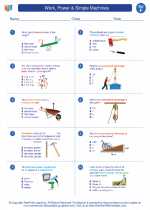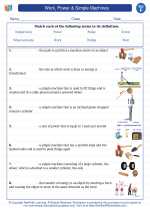X-rays
X-rays are a form of electromagnetic radiation, just like visible light. However, they have a much higher frequency and shorter wavelength than visible light. This allows them to pass through many materials, including the human body, but they are absorbed by denser materials such as bone and metal. This property makes x-rays useful for medical imaging, where they can create detailed images of the body's internal structures.
Properties of X-rays
- Penetration: X-rays can penetrate many materials, but are absorbed by denser materials.
- Ionizing: X-rays have enough energy to remove tightly bound electrons from atoms, creating ions. This can damage living tissues, so exposure to x-rays should be limited and controlled.
- Imaging: X-rays are used in medical imaging to create images of the body's internal structures, such as bones and organs.
Uses of X-rays
X-rays have several important applications, including:
- Medical imaging: X-rays are used to diagnose and monitor conditions such as broken bones, tumors, and dental issues.
- Security: X-ray scanners are used to inspect luggage and cargo for security purposes.
- Industrial testing: X-rays are used to inspect welds, detect flaws in materials, and analyze the internal structures of objects.
Study Guide
To understand x-rays better, consider the following study guide:
- What are x-rays and how do they differ from visible light?
- What are the properties of x-rays, and how are they used in medical imaging?
- What are the potential risks of x-ray exposure, and how can they be minimized?
- What are some practical applications of x-rays in various fields, such as medicine, security, and industry?
By exploring these questions and conducting additional research, you can develop a deeper understanding of x-rays and their significance in science and technology.
.◂Science Worksheets and Study Guides Sixth Grade. Work, Power & Simple Machines
Worksheet/Answer key Work, Power & Simple Machines
Work, Power & Simple Machines  Worksheet/Answer key
Worksheet/Answer key Work, Power & Simple Machines
Work, Power & Simple Machines  Worksheet/Answer key
Worksheet/Answer key Work, Power & Simple Machines
Work, Power & Simple Machines  Vocabulary/Answer key
Vocabulary/Answer key Work, Power & Simple Machines
Work, Power & Simple Machines  Vocabulary/Answer key
Vocabulary/Answer key Work, Power & Simple Machines
Work, Power & Simple Machines 

 Worksheet/Answer key
Worksheet/Answer key
 Worksheet/Answer key
Worksheet/Answer key
 Vocabulary/Answer key
Vocabulary/Answer key
 Vocabulary/Answer key
Vocabulary/Answer key

The resources above cover the following skills:
Reading Standards for Literacy in Science and Technical Subjects
Craft and Structure
Determine the meaning of symbols, key terms, and other domain-specific words and phrases as they are used in a specific scientific or technical context relevant to grades 6-8 texts and topics.